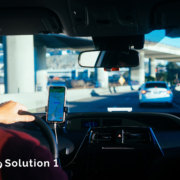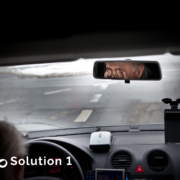Understanding the behavior of drivers during certain events on the road is important to reduce the accident rate and improve traffic congestion.
- The majority of accidents are ascribed to human-related factors, such as an inclination toward aggressive driving.
Nowadays, several technologies are able to detect driver fatigue and have the potential to dramatically reduce the likelihood of accidents occurring. However, the successful implementation depends on the cause and type of fatigue experienced. Acknowledged that human factors always play a crucial role, it is evident that there is great interest in predicting safe driving performance in professional drivers, chiefly with new technologies that are emerging to assist drivers.
In this regard, it seems important to emphasize that the level of comfort may also depend on the presence of suitable supports in the driver cabin, so as to significantly mitigate the vibrations transmitted during driving. Another factor contributing to driver fatigue is the vibrations transmitted through the driver seat, changes are often studied also in relation to the route and vehicle driven.
Bus driving is a complex and cognitively demanding task that requires the ability to simultaneously process information from different sources. Driving a bus in city traffic places high demands on drivers’ working memory which is constantly loaded from changes in dynamic traffic situations. More frequent use of In-Vehicle Information Systems poses an increased traffic hazard and many traffic accidents today can be attributed to distraction caused by these.
Both handheld and hands-free phone use can induce cognitive distraction, and lead to an increased risk of missing traffic signals or adversely affect braking behavior. Obviously, hands-free phone use seems to occupy the driver’s working memory capacity. This is the reason that legislation is seen in several countries against handheld phone use when driving.
- By applying the technique detailed, the driving habits of drivers and the frequency of dangerous driving incidents can be analyzed.
Traffic accidents are one of the main sources of injuries in the 21st century. Internationally, road accidents are considered the third most widespread cause of death next to cardiovascular diseases and cancer. In the United States, traffic crashes cause 30,000 to 40,000 fatalities annually and are the number one cause of death among 8 to 24 years old.
Car insurance companies already use this information to sell user-specific insurance products. In order to analyze a driver’s driving behavior, various pieces of information are required such as vehicle environment or surrounding conditions, vehicle status, and operation information. The vehicle’s environment information includes data regarding the surrounding environment of the target vehicle, such as the number of lanes on the road, the number of surrounding vehicles, and the speed of traffic.
The vehicle state information includes the movement data about the vehicle, including the direction, speed, and driving acceleration of the vehicle. The vehicle operation information is information detailing how the driver controls the vehicle and monitors acceleration pedal, brake pedal, steering wheel, and turn signal operations. Much research is also underway to analyze the behaviors of drivers. The aim is to prevent traffic accidents by detecting driving behavior that is likely to cause accidents and notifying the driver of their occurrence.
In existing driver behavior analysis systems, owing to the difficulty in acquiring vehicle operation information, only the vehicle state information is often used. These systems use acceleration sensors to acquire the speed and acceleration information of the vehicle and detect dangerous driving behaviors, such as sudden starts or stops. However, certain types of aggressive driving behaviors, such as threatening lane changes, are difficult to detect.











